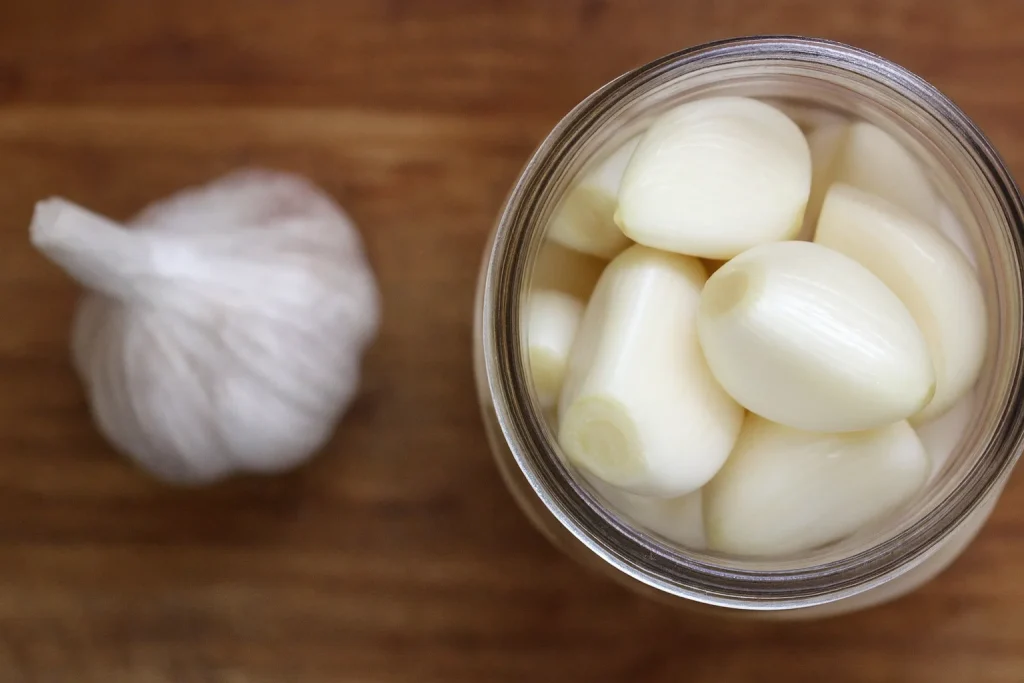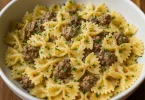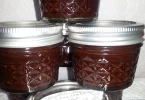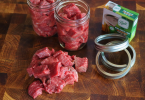
Introduction
Imagine opening a jar of garlic in the middle of winter, only to be greeted by the same rich aroma and bold flavor you remember from harvest season. For many people, garlic isn’t just an ingredient—it’s the heart of the kitchen. Whether it’s the base of a comforting soup, the star of a family pasta night, or the little boost that transforms bread into something unforgettable, garlic is always there to make your meals come alive.
That’s why canning garlic is such a powerful way to keep those flavors close at hand. Instead of worrying about garlic sprouting in your pantry or losing freshness, you can prepare jars that are shelf-stable, flavorful, and ready for any recipe.
This guide will walk you through everything you need to know—from choosing the right bulbs to safe canning methods, common mistakes to avoid, and even creative recipe variations. By the end, you’ll have the confidence to can garlic at home safely, while also enjoying the satisfaction of knowing you did it yourself.
What is Canning Garlic?
At its core, canning garlic is the process of preserving fresh cloves in a way that keeps them usable for months. The idea is simple: by using the right combination of heat, acidity, and proper sealing, you create jars that are not only flavorful but also safe for long-term storage.
There are a few common methods:
- Water bath canning: Uses a boiling water bath; works best with acidified garlic (vinegar or lemon juice added).
- Pressure canning: Applies high heat and pressure; more reliable for low-acid foods like garlic.
- Pickling garlic: Combines vinegar, salt, and spices to create tangy, flavorful cloves.
👉 One important note: garlic is a low-acid food, which means that canning it incorrectly can lead to safety issues, especially botulism. That’s why it’s critical to follow tested recipes and guidelines.
Why You Should Try Canning Garlic
Garlic has more benefits than just taste. When you can it properly, you gain multiple advantages:
- Health benefits: Garlic has been linked to heart health, improved immunity, and antibacterial properties.
- Convenience: You won’t need to peel or chop garlic every time you cook—just open a jar.
- Cost savings: Buying garlic in bulk at harvest and preserving it means less waste and better value.
- Year-round flavor: No matter the season, you’ll always have garlic at its peak taste.
- Homemade pride: Few things feel better than serving a meal enhanced by ingredients you’ve preserved yourself.
Preparing Garlic for Canning
H3: Choosing the Right Garlic
- Select firm, tight bulbs with no sprouting.
- Avoid soft, moldy, or bruised cloves.
- Hardneck varieties often peel easier, while softneck varieties store longer.
H3: Peeling and Prepping Garlic
- The shake-in-a-jar method: Place cloves in a jar, shake hard, and skins fall off.
- Blanching method: Dip cloves in hot water for 30 seconds, then peel.
- Trim the root ends and ensure cloves are uniform in size for even preservation.
H3: Safety Tips You Cannot Ignore
- Never can garlic in oil—it creates an unsafe anaerobic environment.
- Always add acid (vinegar or lemon juice) if using a water bath method.
- Stick to trusted recipes tested for food safety.
Step-by-Step Guide to Canning Garlic
H3: Ingredients and Tools You’ll Need
| Ingredient | Quantity | Notes |
|---|---|---|
| Fresh garlic | 4–5 cups, peeled | Whole cloves, firm and fresh |
| White vinegar | 5 cups | Must be at least 5% acidity |
| Pickling salt | 1 tbsp | Prevents cloudiness; non-iodized salt |
| Water | 1 cup | For brine preparation |
| Optional spices | 1 tsp each | Chili flakes, dill seeds, peppercorns |
Tools Required:
- Glass canning jars (pint or half-pint)
- New lids and screw bands
- Large pot or boiling water canner
- Jar lifter or tongs
- Ladle and funnel
H3: Instructions
- Sterilize the jars and lids by boiling them for 10 minutes. Keep them hot until ready.
- Prepare the brine: In a saucepan, mix vinegar, water, and pickling salt. Bring to a rolling boil.
- Pack the jars: Place peeled garlic cloves into jars. Add optional spices if you like variety.
- Add brine: Pour hot brine over the garlic, leaving ½-inch headspace.
- Seal the jars: Wipe rims clean, place lids on top, and screw bands fingertip-tight.
- Process in water bath: Submerge jars in boiling water for 10–15 minutes. Adjust time based on altitude.
- Cool and store: Remove jars, let them cool undisturbed, and check seals after 24 hours.
Variations of Canned Garlic Recipes
- Pickled Garlic: Add dill seeds, mustard seeds, or chili flakes for extra tang.
- Spicy Garlic: Drop in a few slices of jalapeños or red pepper flakes for heat.
- Herbed Garlic: Add rosemary or thyme sprigs for a savory twist.
- Sweet Garlic: A pinch of sugar can mellow the sharpness.
Common Mistakes When Canning Garlic (and How to Avoid Them)
- Skipping acid: Garlic needs vinegar or lemon juice for safe canning.
- Using oil: Never store garlic in oil at room temperature.
- Overcooking garlic: Long boiling makes cloves mushy—keep processing times precise.
- Ignoring headspace: Too much or too little can prevent proper sealing.
Storage and Shelf Life of Canned Garlic
- Store jars in a cool, dark place like a pantry or cellar.
- Properly sealed jars last 12–18 months.
- Once opened, refrigerate and use within 2–3 weeks.
- Always discard jars with bulging lids, leaks, or cloudy liquid.
FAQs About Canning Garlic
H3: Can I can garlic without vinegar?
No, garlic must be acidified with vinegar or lemon juice for safety in water bath canning.
H3: Is canned garlic as strong as fresh garlic?
Canned garlic tends to be slightly milder but still provides rich flavor.
H3: Can I can garlic in oil?
No. Storing garlic in oil without refrigeration can cause dangerous bacterial growth.
H3: How do I know if my canned garlic is spoiled?
Signs include cloudy brine, off-odors, or jars that did not seal properly.
H3: Can I freeze garlic instead of canning it?
Yes. Freezing is another safe method, though the texture softens slightly.
Conclusion
By now, you know that canning garlic is more than just a way to preserve food—it’s a way to capture flavor, save money, and always have one of your favorite ingredients at your fingertips. When you follow safe, proven methods, you’ll enjoy garlic that’s ready for sauces, stir-fries, marinades, or simply spreading on bread.
The beauty of canning is that it’s both practical and personal. Each jar becomes a little piece of your kitchen, ready to enhance meals and create memories.
👉 Your Call-to-Action: Don’t wait for your garlic to sprout in the pantry. Try this recipe, share your variations in the comments, and gift a jar to a friend. They’ll taste the love in every bite.







